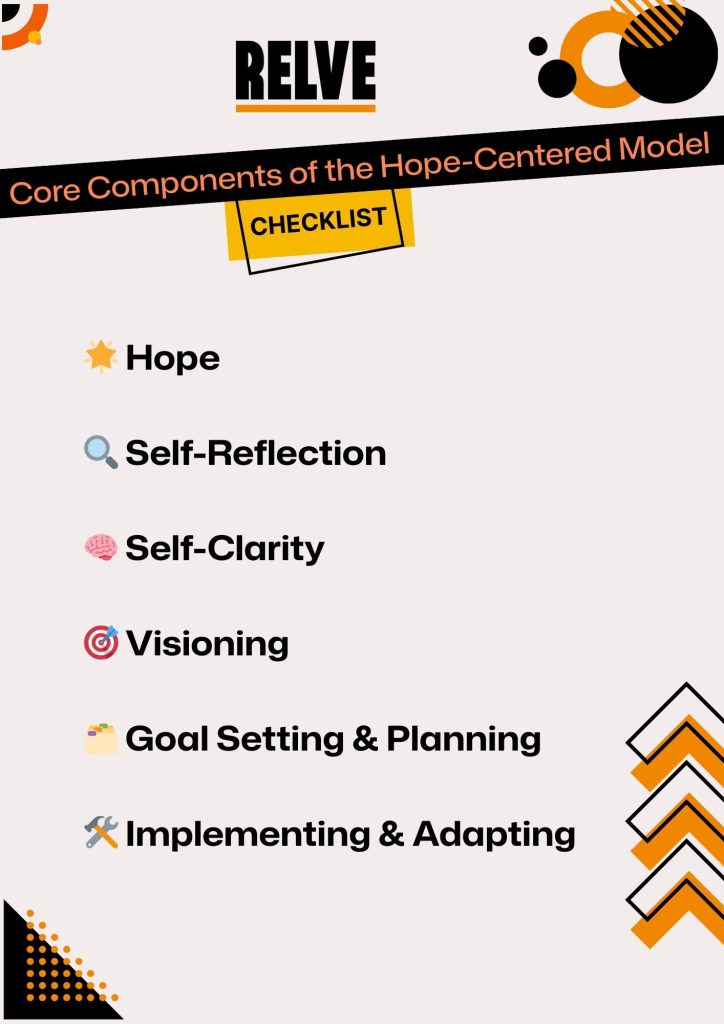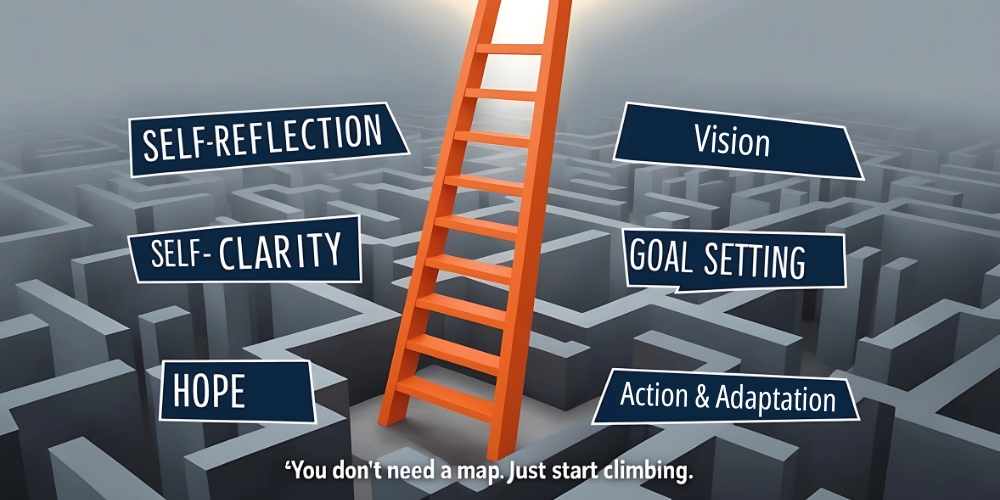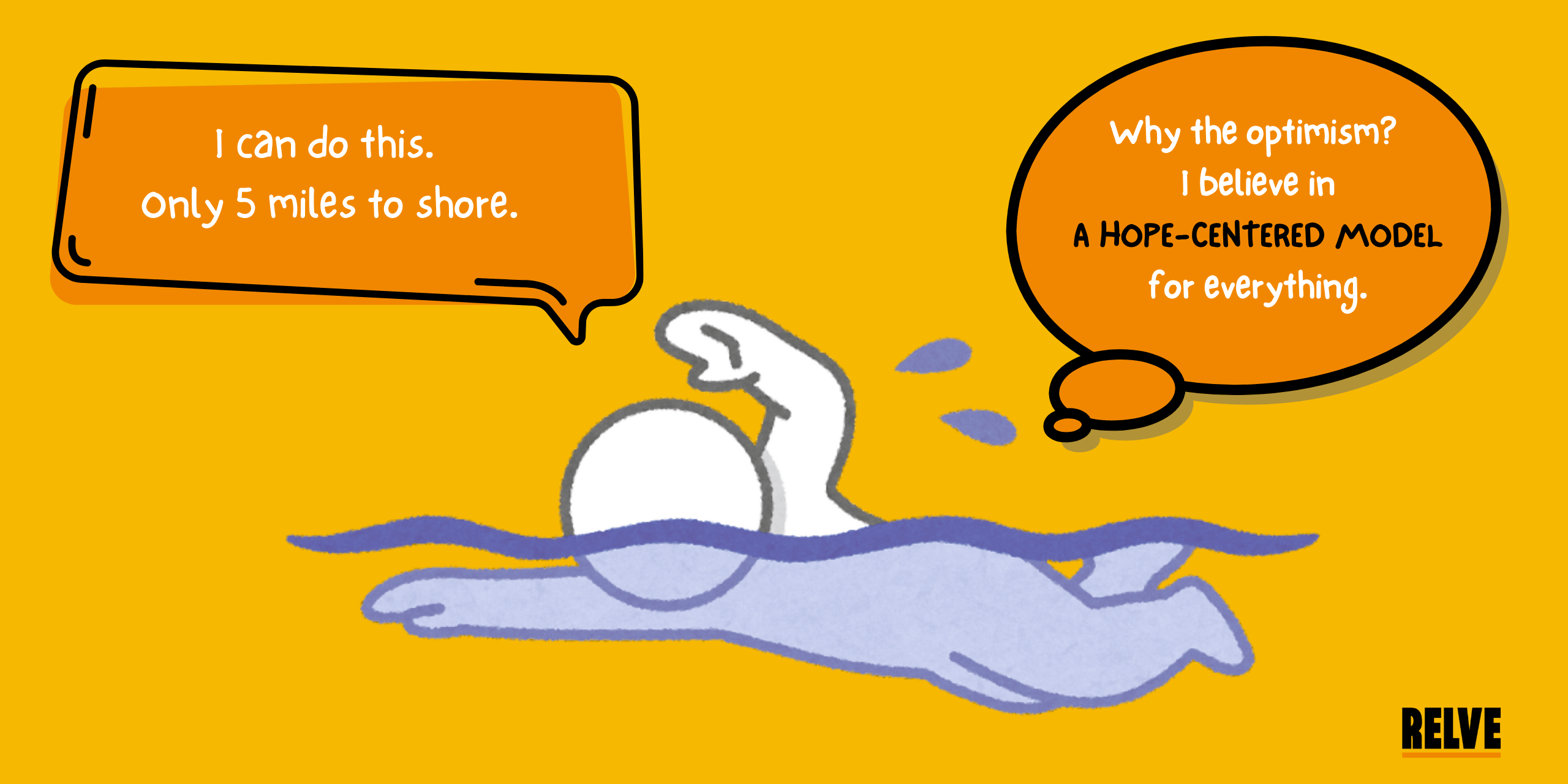Ever feel like your career is a messy jigsaw puzzle with no picture on the box? You’re not alone. Many people jump from job to job without clarity or confidence. Some get stuck in roles that drain them. Others chase titles that don’t fit. The world of work today is chaotic and most of us are winging it. That’s where the hope-centered model comes in. It’s not wishful thinking. It’s a powerful, research-backed approach to building a career with purpose, direction, and momentum.
In this blog, you’ll learn how the model works, why it matters, and how to apply it in real life. From its roots in positive psychology to its role in tackling burnout, we’ll unpack how it helps with reflection, goal-setting, and staying motivated even when life throws curveballs.
Origins and Theoretical Foundations of the Hope-Centered Model
Dr. Spencer G. Niles, Dr. Norman E. Amundson, and Dr. Roberta Neault developed the Hope-Centered Model in response to a growing challenge. People were overwhelmed. Career paths were no longer linear. Work was being redefined. Traditional career planning? Outdated.
So, they blended research from positive psychology, hope theory (by C.R. Snyder), and career flow theory to create a model that made sense for the modern world.
Before HCM
Traditional Career PlanningLinear & Checklist-style.
After HCM
Hope-Centered ModelAdaptive, Reflective & Human.
At its heart, the hope-centered model is about more than just wishing. It’s about taking action with optimism and staying resilient even when life throws a wrench into your perfectly color-coded planner.
Core Components of the Hope-Centered Model
Let’s take a closer look at what makes this model work. It’s built around six core ideas that drive real change, not just feel-good theory.

1. Hope
This isn’t about wishful thinking. Hope here means two things:
- Agency is your motivation to go after your goals.
- Pathways are the plans you create to reach them.
Put them together, and you’re not just hoping things work out. You’re actively making them happen.
2. Self-Reflection
This is the pause button.
You ask, “What have I learned from my past experiences? What do I enjoy? What drains me?”
It’s your chance to zoom out and take a bird’s-eye view of your story.
3. Self-Clarity
Now, you zoom in. What are your values? Strengths? Weaknesses? Aspirations?
This is key to making effective career development choices that actually align with who you are.
4. Visioning
Create a mental trailer of your future.
It’s not about predicting the exact job title in 2035. It’s about painting a picture of what fulfillment looks like.
Spoiler: It probably doesn’t involve crying in a cubicle.
5. Goal Setting & Planning
This is where dreams become deliverables.
Set SMART goals. Break big dreams into bite-sized chunks. And yes, sprinkle in some time management strategies or you’ll just end up chasing squirrels.
6. Implementing & Adapting
Life doesn’t follow your to-do list.
This step teaches you to take action and pivot when things change (and they will). Flexibility is a feature, not a flaw.
Application of the Hope-Centered Model in Career Counseling
So, how do career counselors actually use this model in real conversations, not just slide decks?
They work the six pillars into coaching sessions in a way that feels practical and personal.
- Hope mapping connects a client’s current challenges to their long-term goals.
- Narrative Techniques are also a big thing. Individuals are encouraging people to talk through their career journeys, which helps them spot patterns and strengths.
- Some even use tools like the Career Flow Index to get a better sense of how ready someone is to take action and move forward.
ResearchGate found that people using the Hope-Centered Model improved in some key areas. They had more clarity around their goals, felt more adaptable in their careers, and took more ownership of their progress.
Mentoring Use Case:
Professional mentors are now using the model to guide mentees through career changes. HCM helped mid-career professionals regain control during layoffs and transitions.
Addressing Challenges with the Hope-Centered Model
Life isn’t Pinterest-perfect. So, how does HCM help when stuff hits the fan?
1. Career Transitions
Whether it’s being laid off, switching industries, or facing retirement, HCM equips individuals to process change constructively. Instead of panic, they activate self-reflection and recalibrate goals.
2. Burnout & Setbacks
You can’t journal your way out of burnout. But you can reframe it. HCM provides a structured way to pause, ask “What’s not working?” and design a new path forward with more intention.
3. Overwhelm
A lot of people freeze when faced with endless career paths. The hope-centered model helps by shifting the focus to your “why” before worrying about job titles. That kind of clarity can ease a lot of the pressure.
4. Motivation Slumps
If even checking your inbox feels like a chore, it might be time to reconnect with your bigger picture. Hope-centered strategies are built to bring that purpose back into focus.
🧠 Feeling Stuck? Start Here
According to Gallup’s 2024 report, only 20% of employees feel truly engaged at work. Models like this aim to change that by helping people find meaning and agency in what they do.
Conclusion
The hope-centered model isn’t about crossing your fingers and waiting for things to get better. It’s a practical, research-based approach that helps you stay grounded and move forward even when things feel uncertain. Encouraging self-reflection and flexible thinking gives you a way to build a career that actually fits your life.
And in times like these, when industries shift overnight and certainty is a myth hope might be the most practical tool we’ve got.
So, if your current path feels foggy, remember you don’t need to have all the answers. You just need to believe there’s a way forward and then take that first step.

